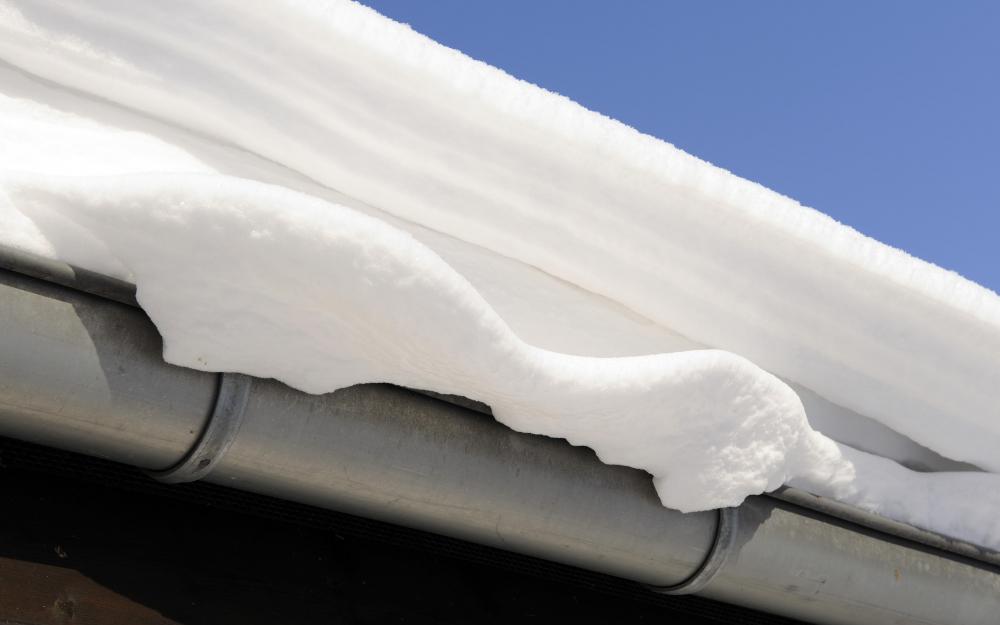At WiseGEEK, we're committed to delivering accurate, trustworthy information. Our expert-authored content is rigorously fact-checked and sourced from credible authorities. Discover how we uphold the highest standards in providing you with reliable knowledge.
What is a Roof Deicer?
A roof deicer melts snow and ice on a roof to prevent them from building up and creating an ice dam. A roof collapse on an older building in a heavy snow area can sometimes also be prevented by the use of a roof deicer, which can melt some of the snow and ice before it becomes too heavy. There are two types of roof deicer products: electrical and chemical. An electrical deicer comes in the form of electrical cable or tape. Chemical deicers include sprays and solid blocks that slowly release deicer over time.
Ice dams usually form at the edge of roofs. Their cause is generally related to lack of or poor insulation underneath the roof edge or eave area. This allows heat to escape from a building and melt a portion of snow and ice near the edge of the roof, where it then refreezes as it begins to run off the roof and into the gutters. The refrozen snow or ice forms a dam that blocks the continually melting snow and ice behind it. This melt water can begin to seep into the roof, creating roof leaks, or down into walls of the building or both.

This situation can be prevented by properly insulating roof edge areas. Some building owners, however, may not be aware of the insulation problem until suddenly they’re confronted with leakage in the middle of a cold winter. One immediate solution is to break the ice dam physically and to clear snow and ice off a roof. Using a roof deicer may be a better alternative to helping prevent the formation of ice dams.
An electrical roof deicer can be either a cable or a length tape. Cables are usually snaked around a roof and perhaps put into the gutter as well, ideally in the summer or early fall when there is no snow. Tape can be fitted more tightly around and under shingles. The deicer is heated by electricity to melt snow and ice to create channels on the roof so that snow and ice can turn to liquid water and run off the roof. Both cable and tape electrical roof deicers come in various lengths to cover different-sized roofs. They also come in both low- and high-voltage versions to accommodate a broad range of roof areas.
An electrical roof deicer can operate automatically or manually. An automatic roof deicer turns itself on when it senses that a roof has reached a certain temperature and moisture density. This can be set by the user. A manual deicer turns on when the user wants it to work. Controllers are available to more accurately regulate the amount of heating energy generated by a manual roof deicer setup.
Spraying a chemical roof deicer on a roof area is another way to melt snow and ice. This requires constant effort, though, and it might not be sufficient to take care of a serious snow and ice buildup. An alternative chemical deicing approach comes in the form of chemical roof deicer blocks, which slowly release deicing chemicals and are placed where needed to create runoff channels on a roof.
AS FEATURED ON:
AS FEATURED ON:











Discuss this Article
Post your comments